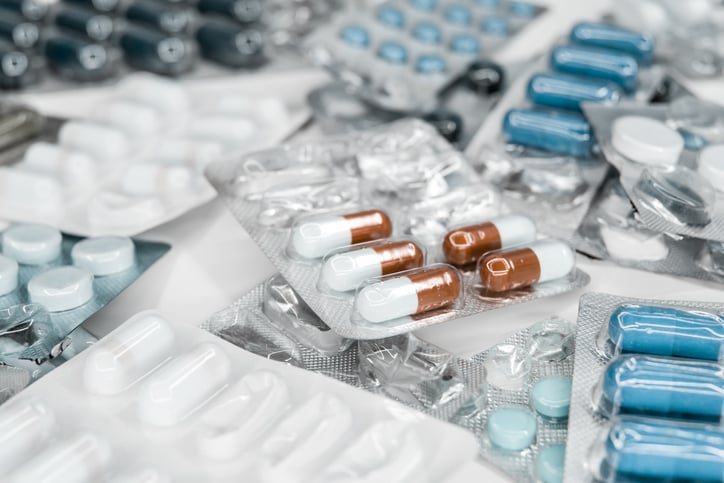What Materials are Used in Pharmaceutical Packaging?
Simply put, not all healthcare packaging is created equal. Product packaging is dictated by product needs, with medical device and pharmaceutical drug packaging requirements differing greatly. High quality and effective packaging play a large role in ensuring that products maintain proper storage conditions during transport, ultimately ensuring patient safety. But how exactly does the packaging differ, and why is it important?
To understand the packaging of pharmaceutical drugs in more detail, we need to first recognize that pharmaceutical products must adhere to much tighter regulations. Primary packaging is the innermost container for pharmaceutical drugs. The purpose of this packaging is to protect the pharma drug from outside factors such as light, moisture, and air. Because this packaging comes into direct contact with the drug, it is used to preserve and contain medicine and avoid contamination. Additionally, the packaging helps protect patients and consumers from the dangers of drugs and pharmaceutical products. Using correct packaging materials can influence shelf life and ensure that the drugs are safe to use.

What packaging materials are most effective for pharmaceutical drugs?
While there are many different types of packaging used in the healthcare industry, some materials perform better than others. These materials help ensure that pharma drugs maintain optimal conditions during transportation and arrive safely to the end user. Some of the most popular material packaging options include aluminum foil, plastic and polymer-based packaging and glass containers.
Aluminum Foil is used as a lidding material for blister packaging of tablets and capsules, and for the packaging of some aerosol products. The foil functions as an impenetrable barrier to oxygen, moisture, light, and micro-organisms. Due to superior barrier properties, these films are considered a top choice for pharma packaging.
Plastic and Polymer-based materials include pharmaceutical sachets, polybags, pre-fillable syringes, and blister packs that are used for tablets, capsules, powders and granulates. These materials are durable and cost-effective; however, the materials may interact with certain pharmaceutical drugs.
Glass containers include vials, pre-fillable syringes and bottles that are used for dry powder and liquid-based medicines. They are excellent for pharmaceutical packaging due to their transparency, easy visual inspection and protection against contaminants. Additionally, they are easy to sterilize and recycle.
Additionally, some of the more complex pharmaceutical drugs include a desiccant layer to help control moisture levels inside the packaging. Desiccant layers are typically found in the form of small packets/pouches, or coatings that are added to the packaging. This layer also serves as a preventative measure against degradation and reduced efficacy of pharmaceutical drugs.
What material properties are important in pharmaceutical packaging?
When choosing optimal packaging materials for pharmaceutical drugs, product needs often dictate the materials being used. Selection of a packaging material will depend on the specific drug and its storage and transportation requirements. Some key material performance attributes that influence material choice include chemical resistance, barrier properties, sterilization compatibility, durability, and transparency.
Chemical resistance is important because the packaging material should be able to prevent any interactions between the drug and the packaging that could compromise the drug’s efficacy or stability.
Barrier properties are also of critical importance, as excellent barrier properties will protect the pharma drug from oxygen, moisture and light, ensuring the drug’s safety. This is critical for pharmaceuticals that are sensitive to these sources of exposure, such as anti-cancer drugs, central nervous system (CNS) drugs, topical drugs, and drugs that modulate the immune system.
Sterilization compatibility is a key attribute because the packaging should be compatible with the sterilization methods used in the pharmaceutical industry. This ensures that the package is free of microbial contamination.
Durability is important especially during transportation and handling, as a robust and strong material helps ensure that the pharmaceutical reaches the end-user safely.
Transparency is essential because the pharma packaging should be transparent enough to allow for easy inspection of the drug for defects or discoloration without opening the package.
Overall, pharmaceutical packaging materials serve an important role in protecting the drugs and ensuring quality and efficacy throughout their shelf life. When selecting the most effective materials for a pharma drug, always remember that their primary purpose is to protect the medication from external factors and ensure stability and effectiveness.



